Who Says Work Can’t Be Fun?
Gregg Treinish is the founder and Executive Director of Adventurers and Scientists for Conservation whose passion to protect wild places is all consuming. Gregg is both an adventurer and a scientist and his resume boasts of ecology degrees and the first trek of the Andes chain from the Equator to the southern most point of Patagonia and he has been recognized for both by National Geographic, being named Adventurer of the Year (2008) and an Emerging Explorer (2013). Gregg recently travelled to Africa to scout and develop new adventure science opportunities in one of the wildest places on Earth.
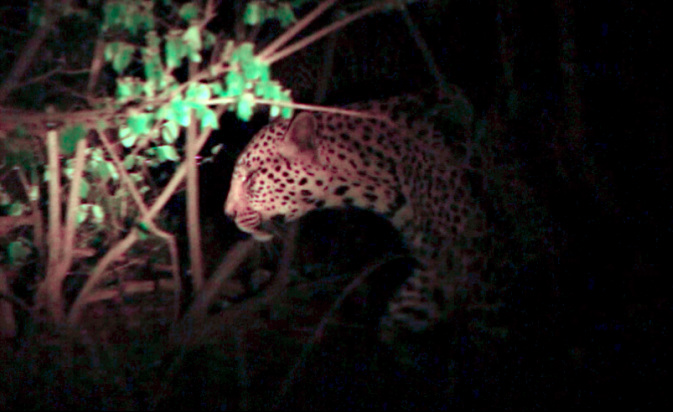
The elusive leopard. Photo by Gregg Treinish.
From Gregg:
It was less than eight hours after I landed in Johannesburg that I found myself on the Limpopo-Lipadi reserve in southeastern Botswana. ASC is exploring a potential project with the reserve to develop an ongoing adventure science effort to support their management team. Less than 20 minutes after arriving on the reserve I found myself crouched down peering around the Mopani trees to see the four, then eight, then twelve and finally twenty-two wild dogs that had slowly surrounded me. With my heart pounding, my hosts and I drew together and agreed not to run should the dogs decide to stop being friendly. I snapped photo after photo and interacted with the pack from a distance. The young pups would approach and retreat, playing with us and testing their limits. The experience immediately connected me to the reserve, to Africa and to myself. By the end of my stay at the reserve I had seen leopards, rhino, wildebeest, impala, kudu, eland and hippos – all from a distance of less than 20 ft! I reluctantly left the reserve having seen everything on my “list” with the exception of elephant and lion, the latter of which are not currently on the reserve.
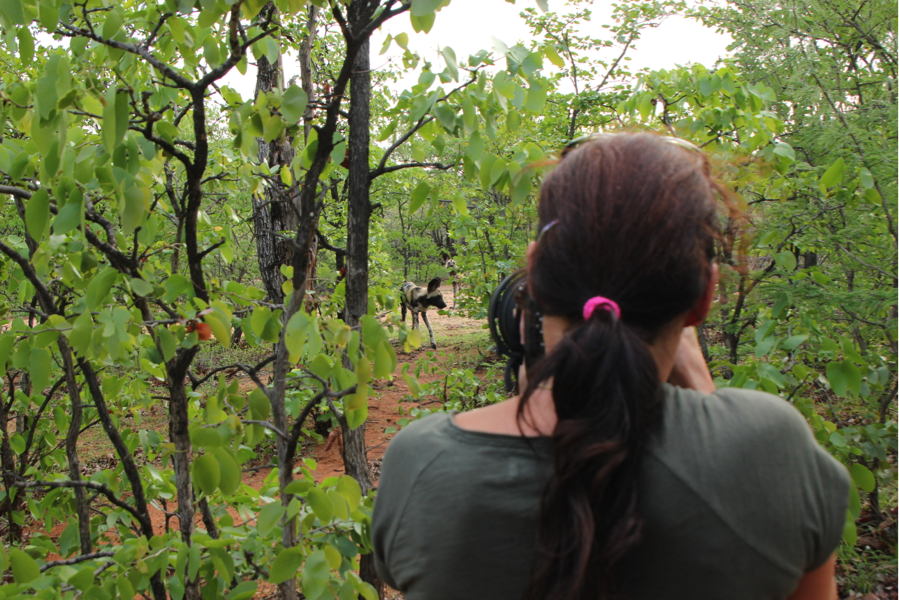
Wild dogs in Mopani trees. Photo by Gregg Treinish.
Next, I was off to spend time with Steve Boyes, a friend and fellow 2013 National Geographic Emerging Explorer, to discuss a possible collaboration. The two of us are kindred spirits living half a world away and when we are together the ideas flow. As we explored the potential for a partnership in 2014, it became clear that we needed to work together.
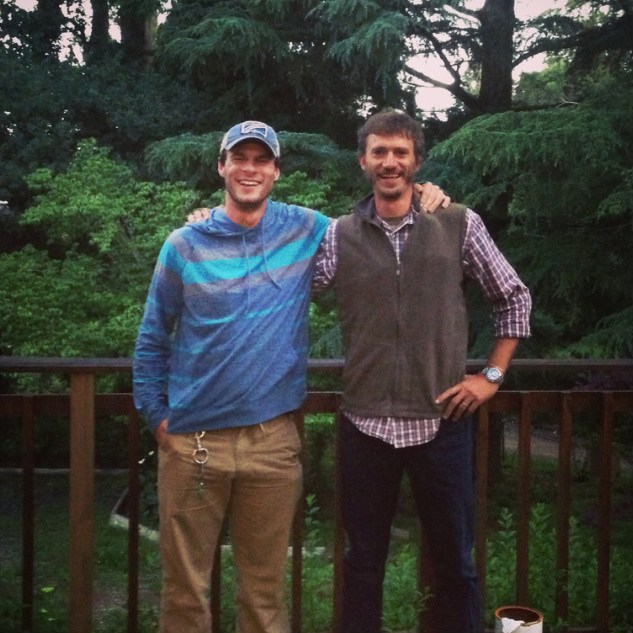
Gregg & Fellow Explorer Steve Boyes. Photo by Gregg Treinish.
Steve’s work inspires me and exemplifies the opportunities that adventure can create for conservation. Currently, he’s focused on preserving some the last remaining wilderness on the planet in the Okovango Delta. He has repeatedly traveled through the region on a mokoro, the traditional dugout canoes of the Bayei people, and has been responsible for the first real scientific documentation of an area that has been largely untouched by humans. While at Steve’s home in Hogsback, South Africa I had the opportunity to practice a bit in the mokoro. I have to admit – it isn’t easy!
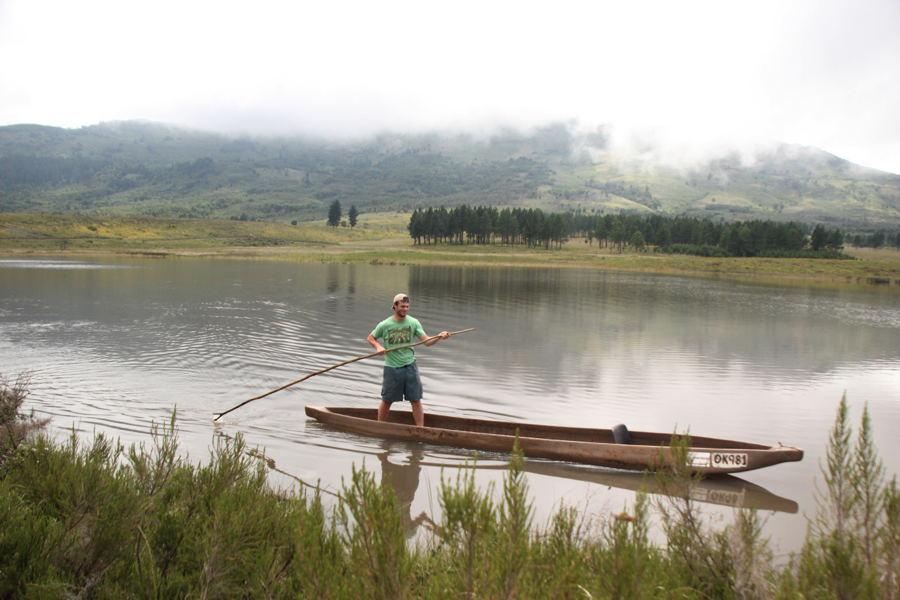
Gregg in the Mokoro. Photo by Gregg Treinish.
Finally, I made my way over to the “cradle of humankind”. While there was no shortage of wildlife and incredible landscapes, the most exciting part was visiting fellow National Geographic Explorer, Lee Berger, who found fossils from 2.5 million year old hominids in this region. After crawling around Lee’s field site for a few minutes, I quickly developed a true appreciation for the difficulty of his work. The bones number in the thousands, and distinguishing them from one another is an impossible task for all but the most skilled eye.
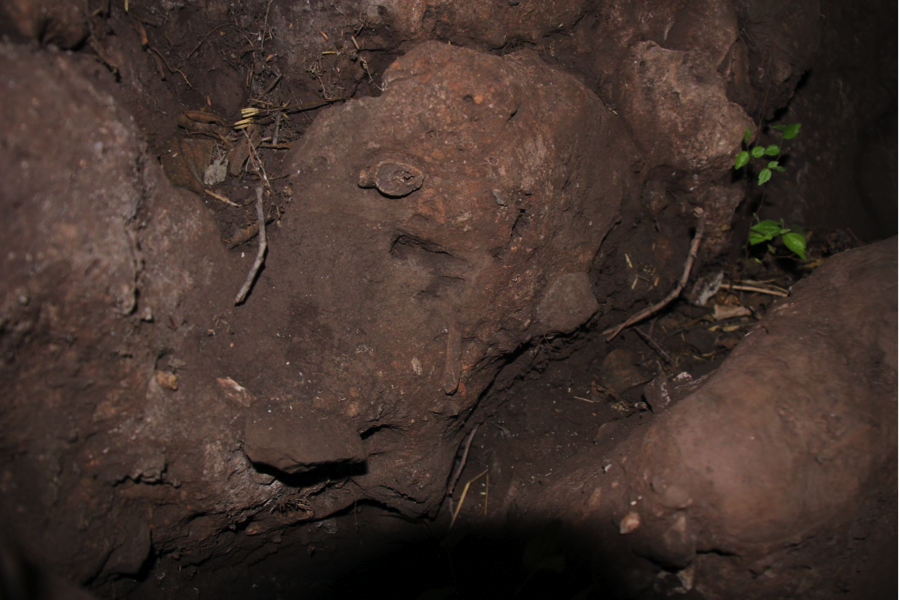
Bones in the “cradle of humankind”. Photo by Gregg Treinish.
Wildlife, wide open landscapes, and an unrivaled human and evolutionary history make the southern portions of Africa one of the most treasured and diverse places on the planet. It was a tremendous way to finish of an incredible year of exploration that I have had in 2013. I couldn’t be more excited to bring ASC’s work to Africa next year!
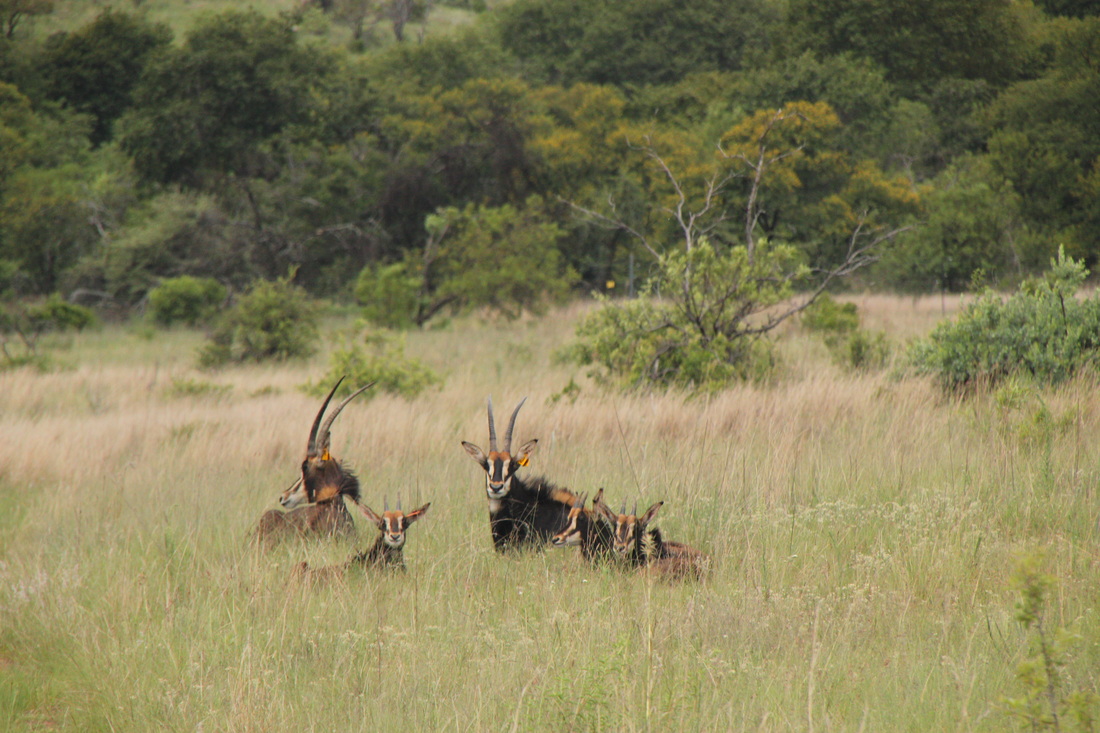
Sable antelope. Photo by Gregg Treinish.






